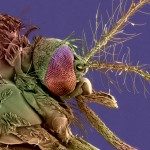Link to Pubmed [PMID] – 34400226
Link to DOI – 10.1016/j.virusres.2021.198544
Virus Res 2021 Oct; 304(): 198544
Zika Virus (ZIKV) is an RNA virus that belongs to the Flavivirus (FV) genus. In the last years, several unique characteristics of ZIKV among FV have been revealed, as the multiple routes of transmission and its ability to reach different human tissues, including the central nervous system. Thus, one of the most intriguing features of ZIKV biology is its ability to cross diverse complex biological barriers. The main aim of this study is to contribute to the understanding of the still unclear mechanisms behind this viral activity. We investigated an African strain and two South American ZIKV isolates belonging to the Asian lineage, in order to characterize possible differences regarding their ability to disturb intercellular junctions. The Asian isolates correspond to an imported (Venezuelan) and an autochthonous (Argentinian) ZIKV strain for which there is still no data available. We focused on occludin and DLG1 expression as markers of tight and adherent junctions, respectively. For this, we applied a quantitative immunofluorescence assay that can ascertain alterations in the cell junction proteins expression in the infected cells. Our findings indicated that the different ZIKV strains were able to reduce the levels of both polarity proteins without altering their overall cell distribution. Moreover, the grade of this effect was strain-dependent, being the DLG1 reduction higher for the African and Asian Venezuelan isolates and, on the contrary, occludin down-regulation was more noticeable for the Argentinian strain. Interestingly, among both junction proteins the viral infection caused a relative larger reduction in DLG1 expression for all viruses, suggesting DLG1 may be of particular relevance for ZIKV infections. Taken together, this study contributes to the knowledge of the biological mechanisms involved in ZIKV cytopathogenesis, with a special focus on regional isolates.

